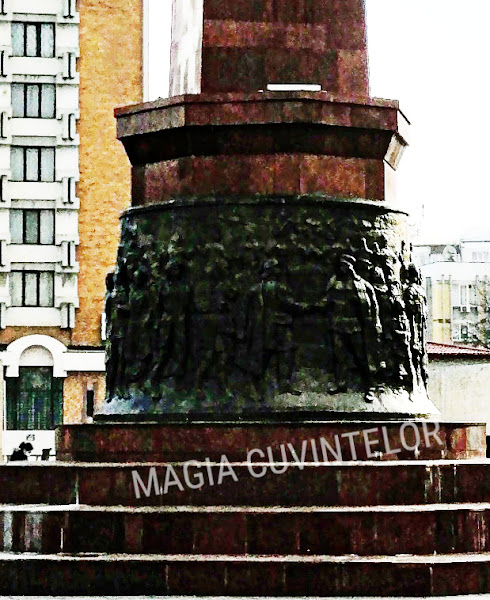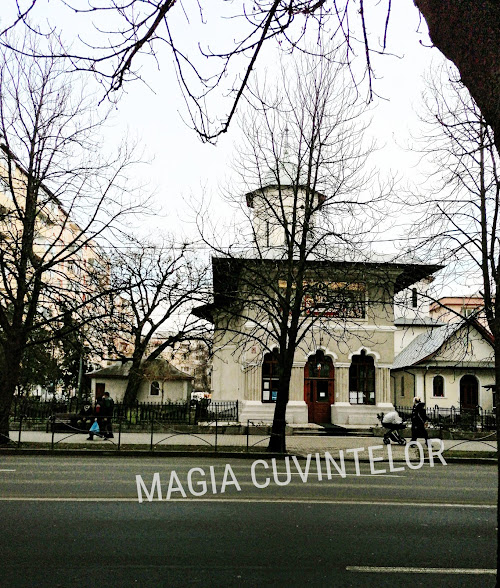Today it occurred to me to write a slightly different article. I want to tell you a little about Focșani, my city, the city where I live. A city with a glorious, tumultuous history, which has undergone various transformations over time.
Focșani, a historic city is the residence of Vrancea County, an area famous for its vineyards and wines. The city is located on the border between the historical regions of Moldava and Muntenia. Until the reign of Alexandru Ioan Cuza, there were two cities with the same name: Focșani Munteniei and Focșani Moldovei. In that historical period, the two cities were separated by a river, the Milcov River. Now, the Milcov River is out of town, its course was changed when the two cities merged.
For those who don't know, on January 24, 1859, the Union of Moldavia with Muntenia, also known as the Little Union and of course the union of the two cities of Focsani, took place. In Iași, being the capital of Moldavia, the Union Pact was signed.
„Leopoldina Bălănuță‟ Trade Unions Culture House

Because I had little work to do in the city center, I decided to take a few photos of the city's historic buildings. I promise I'll take more pictures.
The House of Culture of the Trade Unions should have been an exclusively cultural space. The building is named after the actress Leopoldina Balănută, originally from Focșani. The House of Culture was built in the early 80's, with the function of promoting authentic values in the cultural sphere, which unfortunately has become a rental space. Many rooms are rented, the performance hall also hosts more or less well-known artists throughout the year, so that money somehow runs.
The building was built in the early 1980s. A simple house of culture, in 1999 it completes its name with that of the great actress from Focşani.
Located very well in the center of Focșani, the House of Culture of the Trade Unions Leopoldina Bălănuță has a beautiful performance hall.
Union Square
Union Square is located on the old border between Muntenia and Moldava. In the center, there is the Union Obelisk, has a height of 20 meters and currently 85 characters of the historical act at the Union of Principalities. It's the place I go to most often.
In the center is the Union Obelisk is the work of a team led by sculptor Ion Jalea Baza. This year marks 45 years since the inauguration of the monument dedicated to the Union of Romanian Principalities, which took the place of the border post located in the center of Focșani. Today, the Obelisk evokes the history of the Romanians from these lands, marking a moment of great significance for the people of Vrancea, the Little Union of Focșani and the disappearance of the border between the two cities
Focșani.
The Popular Athenaeum and the Church of the Nativity of Saint John the Baptist, founded by the Lord of Wallachia, Grigore Ghica, are also part of the same complex.
The Popular Athenaeum "Maior Gheorghe Pastia"
The Popular Athenaeum "Maior Gheorghe Pastia" from Focșani is a public cultural institution subordinated to the Focșani Municipal Council. The building in which the Athenaeum operates is inscribed on the List of Historical Monuments. The first stone was laid on May 29, 1927. Major Gheorghe Pastia will continue to be one of the representatives of Vrancea culture.
The Athenaeum's mission is to promote local, national and European cultural values for the animation and development of the cultural sector and its implementation in local and regional sustainable development programs.
The Popular Athenaeum “Mr. Gh. Pastia ”is the only public cultural institution in Vrancea County that manages two professional artistic ensembles: the PASTORAL Chamber Choir - with employed artistic staff and the UNION Chamber Orchestra - with artistic staff not employed by state of functions, all having the quality of permanent collaborators.
Church dedicated to the Nativity of St. John the Baptist
The church dedicated to the Nativity of Saint John the Baptist was part of the whole former monastery dedicated to the "Nativity of Saint John the Baptist" being founded by the ruler of Muntenia Grigore Ghica in 1661. The monastery was built in Focșani Muntenia, right next to the two borders until the Union of 1859. Today, the Church of the former monastery is in the public garden in Focșani.
The monastery is one of the richest in the area with properties in Focsani and in the neighboring wine areas and over time it has been offered donations by: Al. Ipsilanti, Duca Voda, Serban Cantacuzino, Constantin Brancoveanu, Mihail Racovita. In this monastery, the religious wedding of Prince Gh. Bibescu with Marita Ghica was celebrated, Grigore Sturdza being the ruler of Moldova.
In 1854 the monastery burned down but the church remained. Initially, the church was built of brick, on a stone foundation, in the shape of a cross with 3 apses and with a classical division.
As a small historical parenthesis, until 1968, Vrancea County was called Putna County. Focșani Moldavia was part of Putna County, and Focșani Munteniei was part of Râmnicul Sărat County. Putna had belonged to Moldova since the time of Alexander the Great.
Also in Unirii Square we find Focșani City Hall and Vrancea County Council.
The Church dedicated to the Assumption
The Church dedicated to the Assumption - Precista from Focșani, is a voivodship foundation about which not much is known. The only information about this sacred place is that it was built around 1710 in Focșani Moldavia. Its foundation is attributed to Nicolae Mavrocordat.
The Precista Church is a triflate plan monument, with a porch made of arches, a narthex separated from the nave, lateral abysses, the apse of the altar; above the porch rises the bell tower. The whole construction is made of brick, wooden tower, in the church there is no painting, the floor is made of stone slabs, and the carpentry inside is made of wood. Between the porch and the nave there is a solid wood door, the window openings are cut on the plastered wall.
Administrative Palace from Focșani (Former Putna Prefecture)

The former building of the Putna prefecture is a historical monument that was built between 1913-1926 in the traditional Romanian style specific to the buildings erected in the 20th century, according to the plans of the architect Daniel Renard. The architectural style was created in the school of the famous architect Ion Mincu. It is the only building in the city with a roof tile decorated with popular motifs.
Maior Gheorghe Pastia Municipal Theater
Like the Popular Athenaeum, the theater was built at the initiative of the reserve major Gheorghe Pastia. The works for the construction of the building began in 1909, laying the foundation stone on September 11, 1909. The donation was made on the condition that the theater always bear the inscription "Maior Gheorghe Pastia" Theater.
I was not able to take photos in front of the theater because various rehabilitation works are being carried out in this area.
The “Birth of the Mother of God” Church
The “Birth of the Mother of God” Church - Săpunaru from Focșani is a historical monument, built in 1783 by the Săpunarilor Guild. In 1940, consolidation works took place, it was plastered again and repainted in fresco by Keber and Cantini. The interior is represented by paintings and icons, among which the icon of the Mother of God with inscriptions in Latin and Slavonic stands out.
I hope you enjoyed the virtual visit of Focșani, my city. These are not the only historical places in the city. An important building in the city is the Mausoleum of the Romanian heroes from the First World War and many others. I will complete when I have the photos.
What do you say? Isn't it a city worth visiting?
Unfortunately, not much is known about this place of worship.
You can take a maximum of 500 characters from this article, the condition is to specify and visibly insert the link of the article.
















Comments
Post a Comment